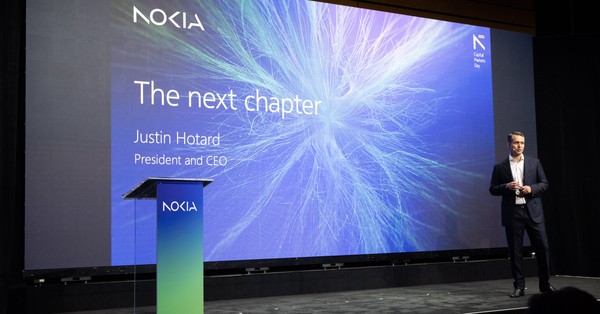FCC advances upper C-band auction for 5G and 6G
The FCC has advanced a rulemaking that would free up a significant slice of upper C-band spectrum for 5G and future 6G services, setting the stage for a high-stakes auction and complex satellite transition by mid-2027.
NPRM to clear and auction 100–180 MHz in 3.98–4.2 GHz
The Commission unanimously approved a Notice of Proposed Rulemaking (NPRM) to clear and auction between 100 and 180 megahertz in the 3.98–4.2 GHz band (upper C-band) via competitive bidding. This follows a February notice of inquiry and aligns with a congressional mandate in the “One Big Beautiful Bill Act” requiring the FCC to auction at least 100 megahertz by July 4, 2027.
Upper mid-band capacity with global n77 device support
Upper mid-band spectrum delivers the best trade-off between coverage and capacity, complementing existing 3.45–3.55 GHz, CBRS, and the lower C-band (3.7–3.98 GHz) cleared in 2020–2023. Because 3GPP band n77 already extends up to 4.2 GHz globally, much of the 5G device and radio ecosystem can support this expansion with minimal modification, accelerating time-to-market for carriers once licenses are granted.
Auction scope, service rules, and satellite transition proposals
The NPRM seeks comment on how much spectrum beyond the 100 megahertz minimum can be repurposed, which service rules to apply, and how to structure the transition for incumbent satellite users. The Commission proposes to model licensing, technical, and transition frameworks on the proven 3.7 GHz Service rules used in the prior C-band clearing to speed deployment and reduce uncertainty.
Scope, timing, and rules for the upper C-band auction
The proceeding centers on how to balance speed, scale, and coexistence across wireless, satellite, and aviation stakeholders on a tight clock.
Clearing options from 100 to 180 MHz and 4.0–4.2 GHz scenarios
The FCC is considering clearing a portion of 3.98–4.2 GHz, with options ranging from 100 to 180 megahertz. It also asks whether and how to reallocate within 4.0–4.2 GHz and how to maximize usable spectrum while protecting adjacent aviation systems at 4.2–4.4 GHz.
Apply 3.7 GHz Service rules to upper C-band licensing
The Commission proposes applying the existing 3.7 GHz flexible-use framework to the upper C-band, including power levels, out-of-band emission masks, geographic licensing areas, earth station protections during transition, and interference coordination. Expect a familiar auction construct and post-auction clearing regime modeled on the prior effort.
Tribal licensing window to expand rural and Native coverage
The NPRM raises the possibility of a dedicated tribal licensing window so Native Nations can secure spectrum rights over their lands, addressing a longstanding coverage and prioritization gap that occurs when tribal areas are subsumed into larger market licenses.
Upper C-band satellite transition strategy and risks
Clearing upper C-band requires moving entrenched satellite services again—this time with tighter adjacency to aviation and denser earth-station dependencies.
FSS feasibility to repurpose 100+ MHz with incentives
Incumbent fixed satellite service (FSS) operators, which include major GEO providers serving broadcast and data networks, have indicated they can repurpose at least 100 megahertz, with the potential to clear more under the right incentives and reimbursement structure. SES and others have signaled support for a process similar to the recent lower C-band transition, while cautioning that technical complexity, timelines, and customer impacts rise as more spectrum is cleared.
Relocation costs, accelerated clearing, and migration sequencing
The FCC is seeking input on relocation cost reimbursement, accelerated clearing incentives, and practical steps to migrate customers out of the band. Based on the last C-band program, expect a mix of satellite payload reconfiguration, earth-station filter deployments, teleport and network retunes, and program management spanning content distribution, enterprise VSAT, and critical communications customers.
Lessons from prior C-band clearing inform phase two
The prior C-band auction raised a record sum and demonstrated that well-structured incentives can deliver rapid spectrum availability. However, the remaining upper C-band supports core video and data distribution paths; the second round will likely require more intricate choreography across operators, programmers, and integrators to avoid service disruption.
Aviation coexistence and technical guardrails near 4.2–4.4 GHz
Proximity to radio altimeters means the upper C-band plan must incorporate robust coexistence from day one.
Safeguards for radio altimeters adjacent to new 5G allocations
Radio altimeters operate in 4.2–4.4 GHz, directly adjacent to the proposed new 5G allocations. The FCC is coordinating with the FAA and NTIA on emission limits, guard bands, device specifications, and potential mitigation zones to ensure aviation safety without unduly constraining terrestrial deployment.
Emission masks, power limits, filtering, and airport protections
Key parameters likely include stricter out-of-band emission masks, base-station power and antenna tilt controls near airports, device filtering performance, and potential phased activation schedules. Carrying over the 3.7 GHz rules provides a starting point, but expect targeted modifications to reflect the tighter adjacency.
Market impact, carrier strategies, and planning guidance
Upper C-band could reshape 5G capacity roadmaps, spectrum valuations, and rollout strategies over the next 24–36 months.
How MNOs will use upper C-band for densification and 5G-Advanced
National MNOs will view upper C-band as prime capacity spectrum for urban and suburban densification, carrier aggregation, and 5G-Advanced. Operators with heavier low- and mid-band holdings can leverage this to balance load and improve user throughput. Given band n77 compatibility, RAN upgrades could lean toward software and radio retunes rather than wholesale hardware swaps in many sites.
Spectrum valuation, demand, and competitive dynamics
Spectrum pricing should reflect healthy demand for mid-band capacity but may be tempered by carrier balance sheets, interest rates, and the availability of alternative capacity solutions. New entrants or regional providers could seek targeted licenses, while satellite and broadcast stakeholders will negotiate to ensure transition certainty and funding.
Enterprise and broadcaster migration considerations
Enterprises relying on C-band satellite connectivity and broadcasters using contribution and distribution links should engage early with service providers on migration plans. Expect windowed cutovers, dual-illumination periods, and possible equipment refresh cycles aligned with clearing milestones.
Action plan and timelines ahead of the 2027 auction
With the NPRM in motion, stakeholders have a limited window to shape rules, budgets, and roadmaps ahead of a 2027 auction deadline.
Mobile operator readiness: capacity modeling and RAN planning
Model 100–180 MHz scenarios into capacity plans; assess n77 device and RAN readiness; evaluate coexistence constraints near airfields; prepare for PEA-style licensing and post-auction clearing schedules; and plan capital allocation for 2026–2028 deployment waves.
Satellite stakeholders: inventory, costs, and FCC engagement
Inventory earth stations and critical paths in the 3.98–4.2 GHz range; quantify relocation costs; define operational workbacks for customer migrations; and engage the FCC on incentives and timelines to minimize service risk.
Enterprises and public sector: private 5G and local coordination
Track auction design, potential tribal licensing opportunities, and local deployment timelines; evaluate private 5G plans that could leverage upper C-band; and coordinate with aviation and municipal authorities where adjacency constraints may apply.
The upper C-band NPRM opens a consequential, time-bound path to expand mid-band 5G capacity in the U.S.; success will hinge on pragmatic transition funding, tight aviation coordination, and rapid industry execution to meet the 2027 clock.









































